Bette Billiot
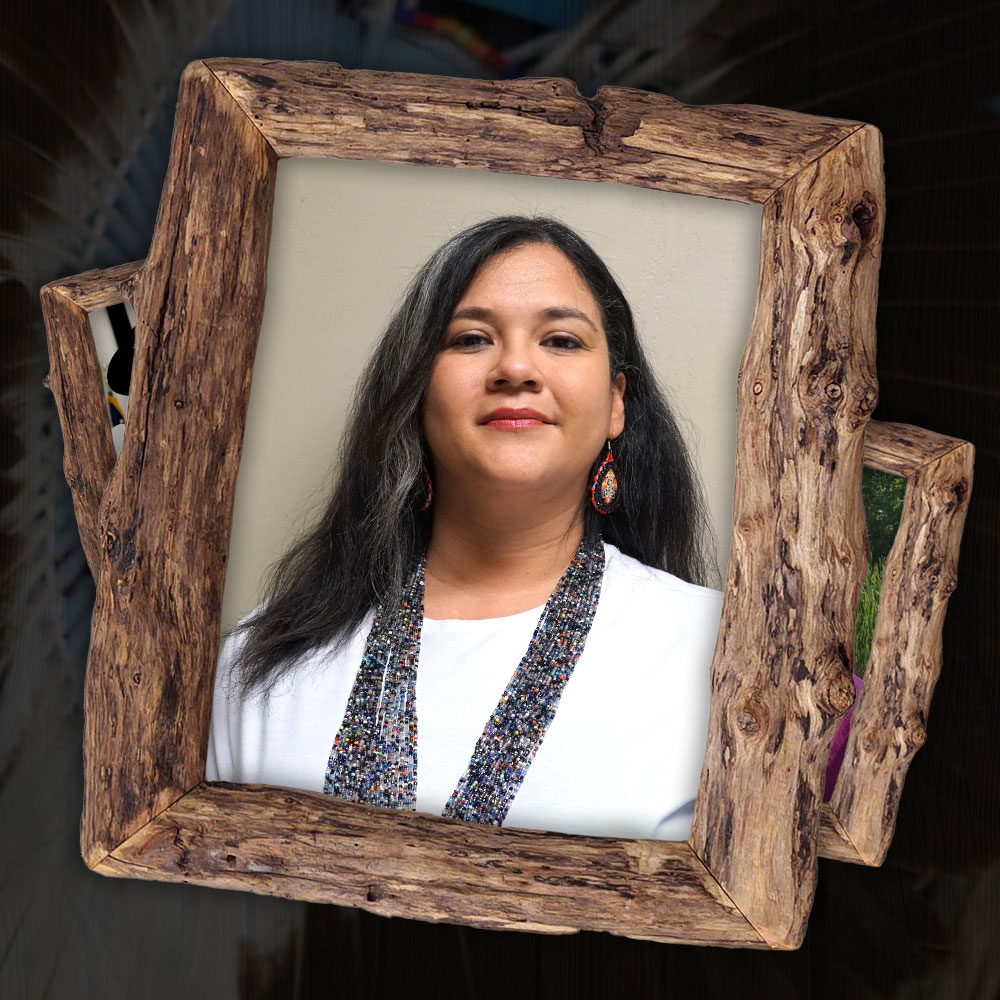
Dulac, Louisiana United Houma Nation Favorite Tradition “Outside of family coming together at powwows, it would be getting together with my aunts and cooking and learning their cooking.” Being UHN “I am very prideful of who I am and where I come from. I think it was meant for me to be a part of this tribe and family. “To be brought up to have learned both sides of the tribe, my father was a council member in the 90s and I learned a lot of the behind the scenes and the politics of the tribe at a very young age and I had an aunt that taught me the traditional and dancing and meaning side of the tribe. “I was very blessed to be able to grow up, you know, with that in me and that played a major part in me when I became an adult and being able to pass that on to my boys.” Growing Up in South Louisiana “There is no place like home. I’ve been all over the United States and even outside of the United States and there’s nothing like coming home to Louisiana. I don’t know if it’s smelling the muddy water and seeing those oak trees and knowing that you’re home.” Listen
Joshua Pitre
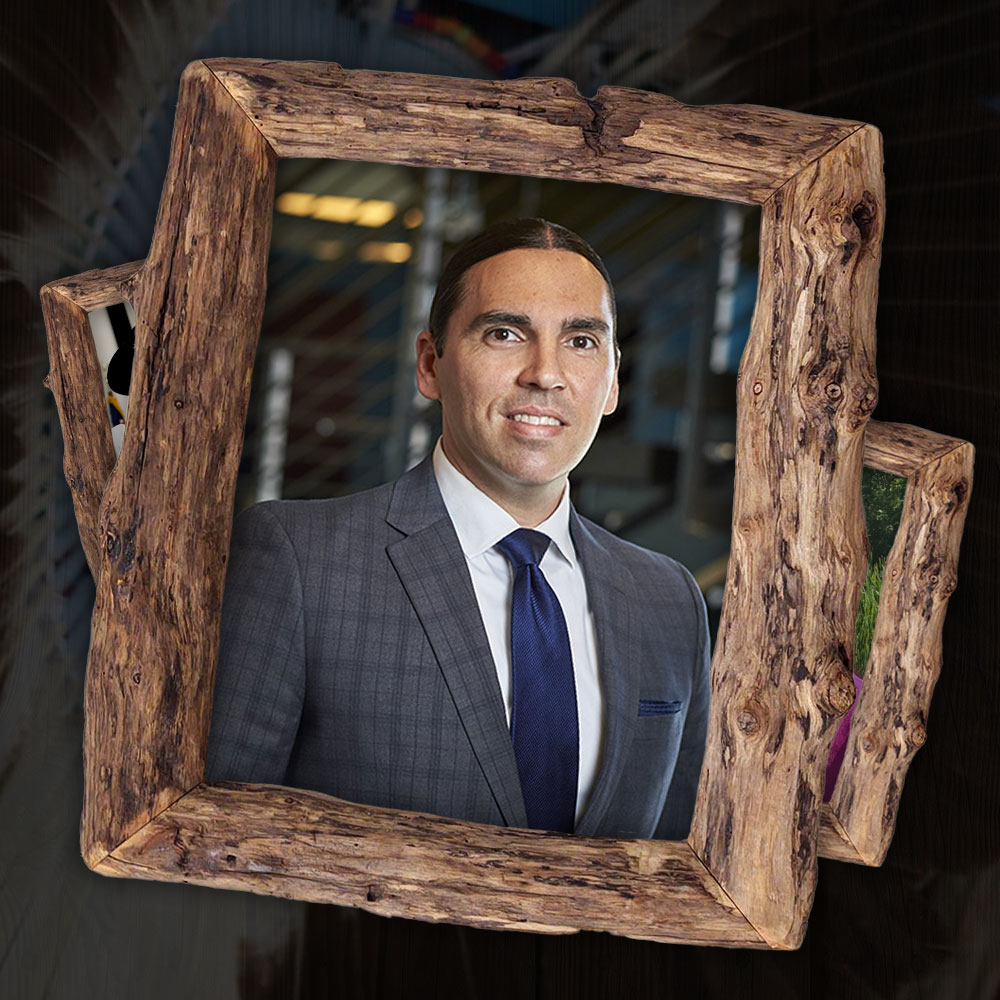
Cut Off, Louisiana currently in Washington DC United Houma Nation Pitre is the director of government relations at Clause Law in Washington DC. He has worked on behalf of tribal nations for more than a decade. See his full professional bio. Favorite Tradition “One of the most important traditions that I’ve been able to learn about, and really want to learn more and pass on to my daughter, is our traditions related to medicinal plants.” Being UHN “It means everything. My whole life has kind of been centered around the fact that I am a member of the tribe. I mentioned my great grandfather who was a traitor at the community. He spent his whole life off of the land in a traditional way. My grandma was a tribal council for several years and she also worked at our tribal center for decades. My mom served for over a decade as principal chief of the tribe and so I just grew up in that environment. “It was part of my everyday life, just being a member of the tribe and seeing what I can do to be helpful and carrying on those traditions and our recognition efforts.” Growing Up in South Louisiana “I loved growing up in south Louisiana. As I mentioned, I am in Washington D.C now so as I mentioned, I am able to come home fairly often. I spent nearly ten months here in Louisiana during the pandemic and I haven’t spent that much time home in probably over a decade. So, it was great to be back despite the circumstances. “People say oh you lost your down the bayou accent. Being home for a while… The fact that I grew up in southern Louisiana around a lot of great people, great food, great music, you know the French language that we speak down here, so yeah, I wouldn’t want to grow up anywhere else. “In D.C I work for a small law firm that represents Indian tribes across the country.” Listen
Ryan Anthony Williams

Houma, LOuisiana United Houma Nation Williams is an actor, model and director known for his roles in: Genius The Devil All the Time Queen Sugar
Celebrations of Life
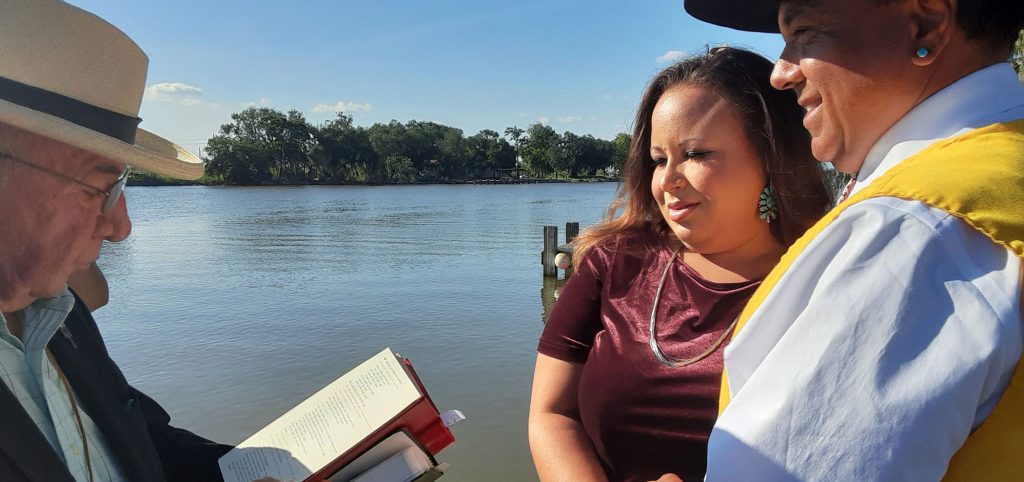
By Robbie Trosclair, staff writer For the seasons of life, the United Houma Nation combines their traditions with the culture of the surrounding French Cajuns. Traditions like smudging, smoking pipes and prayer songs are integrated with infant baptism baptism, marriage feasts and wedding masses. And in all these traditions, music accompanies each life event. The songs vary in purpose as they have different songs for each event and the songs have been passed down through the generation. Although they don’t all have names, they all have the name of “Wakonda” or creator. Chief August “Cocoa” Creppel says he’s lucky to have the gift of singing to help him and his people enjoy life. “I’m just sharing the gift that God gave me,” says Creppel. For birth, it all starts with a name. The child is given its government name, but the elders of the tribe, or the family, also give them a name. For Creppel, his Native name translates to Sea Eagle Dances. He gave his daughter the name Sunrise Eagle. The birth of a child also calls for a large celebration with singing, dancing and a feast. Along with his Indigineous traditions, Creppel and many other UHN tribal citizens are Christians. For weddings, Creppel does the standard vows as a pastor, but also introduces more Indigienous traditions. The married couple will receive Pendleton blankets, which are very important gifts that Native Americans give during celebrations. The couple is also smudged with a mixture of sage, cedar, tobacco and sweet grass, four ingredients to represent the four elements from the four directions where we all come from. The four directions of course being north, according to Creppel brings cold, cleansing fresh air. The east brings new beginnings with the sunrise, the south brings the heat and warmth of the day, the west brings the end of the day Charlie Duthu says he has a Calumet, a peace pipe, which was given to him as a gift. It’s made of twisted wood and adorned with beads and an eagle head and traditionally was smoked for ceremonial purposes. Creppel said that through smoking the pipe together, no lies should be told. Duthu let a friend use his Calumet to smoke with his bride at the wedding. Along with the gifts, the UHN also celebrates through Native American prayer songs dedicated to Wakonda, the creator. The men feed women meat while the women feed men berries. This tradition goes back so far so that husband and wife would each gather their gift as well. For deaths in the tribe, Creppel sees it as a bittersweet moment. “When a person dies you don’t get to talk to them, see them, kiss them goodnight or kiss them good morning,” says Creppel. It’s always sad, Creppel says, but as a believer, he knows that they’re with Jesus now. Creppel also has a whistle made from an eagle bone. It is blown in the direction of the four winds in collaboration with prayer songs and smudging. The four winds come up so often because it’s the circle of life, says Creppel. Duthu remembers a time when death was a little different. When he was younger, women were inside the home with the body and the men would be outside. Although he doesn’t remember why, Janie Luster was able to explain that it may have been due to the gender norms at the time. Women stayed inside to do housework and men stayed outside to do traditionally masculine tasks at the time. Creppel says that these celebrations of life were harder to do with the COVID-19 pandemic, even having his own wedding shortened because of it. However, the UHN was able to overcome that obstacle and look forward to many more celebrations of life in the future. PODCAST SERIES marriage Garde Voir Ci · Season 4, Episode 7 – Marriage with Karen Solet Garde Voir Ci · Season 4, Episode 8 – Traditional Marriage with Kirby Verret Garde Voir Ci · Season 4, Episode 9 – Marriage with Chief Cocoa Creppel
Powwows
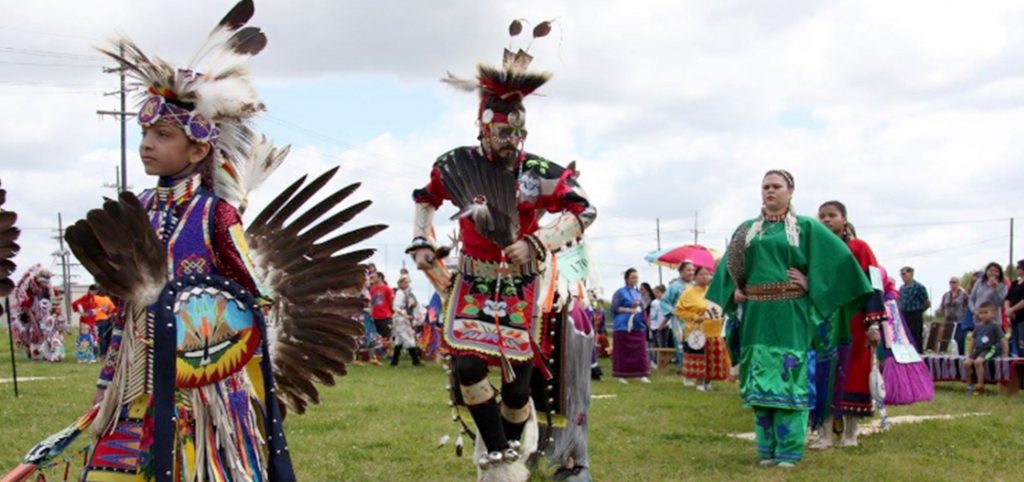
powwow in pictures There are many different styles of dance that take place during a powwow. Each dancer wears regalia unique to that style. Items such as jewelry, pottery, baskets and art are sold from vendors. They are all hand-crafted and authentic to the tribe’s origin. The drumming that takes place during a powwow is considered the heartbeat of the tribal nation The clothing worn during a powwow is called regalia. Rituals and honorings often take place at a powwow Members of the public are welcome to attend the powwows and experience the culture.
Three Sisters
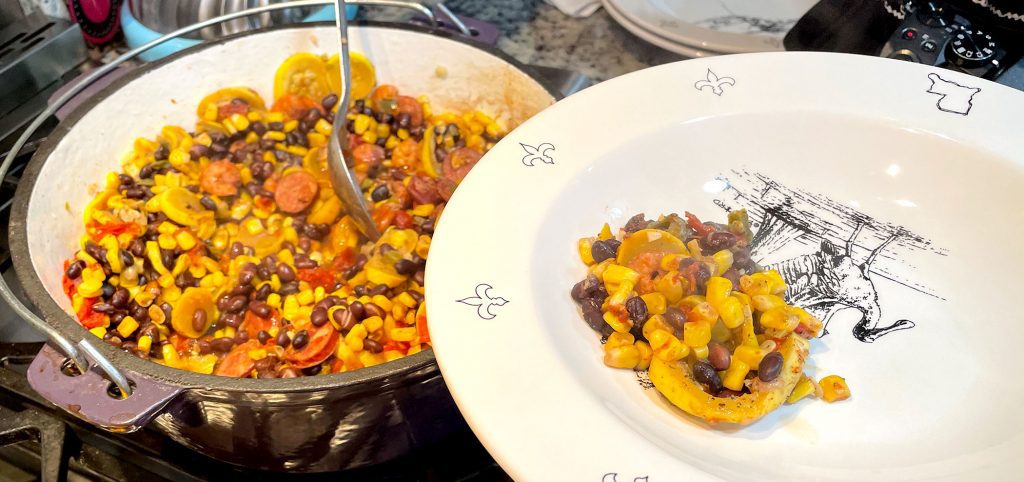
One pound of black beans is added to a separate pot until fully cooked. This take about 5-10 minutes. While the beans cook, prepare the vegetables Chop the onions Slice the squash Slice the sausage Sauté sausage and onions Add the bell peppers and celery Add a handful of fresh shrimp and continue to cook Add 2 pounds of frozen corn and stir Cook for 20-30 minutes until all ingredients are cooked down. Enjoy! a recipe Three Sisters Lora Ann Chaisson Three Sisters Dish is a vegetable dish combining three main ingredients (corn, squash, and beans) together to make a nutritional dish. It is named this because all three of the main vegetables in this dish are planted together when farming. *spices are Chaisson’s secret Ingredients 2 links of sausage 1 onion (diced) 1 lb of black beans 1 bag of frozen corn 4 tomatoes (diced) 3 squash Fresh shrimp 1 Dice one whole onion, slice two links of sausage, and three squash into pieces. 2 Cook 1 lb of black beans in a pot of water until fully cooked. Strain afterwards.3Begin cooking the sausage and onions together4Add bell peppers and celery5Add fresh shrimp6Add one bag (2 lbs) of corn to the pot and stir7Cook for 20-30 minutes
Fry Bread
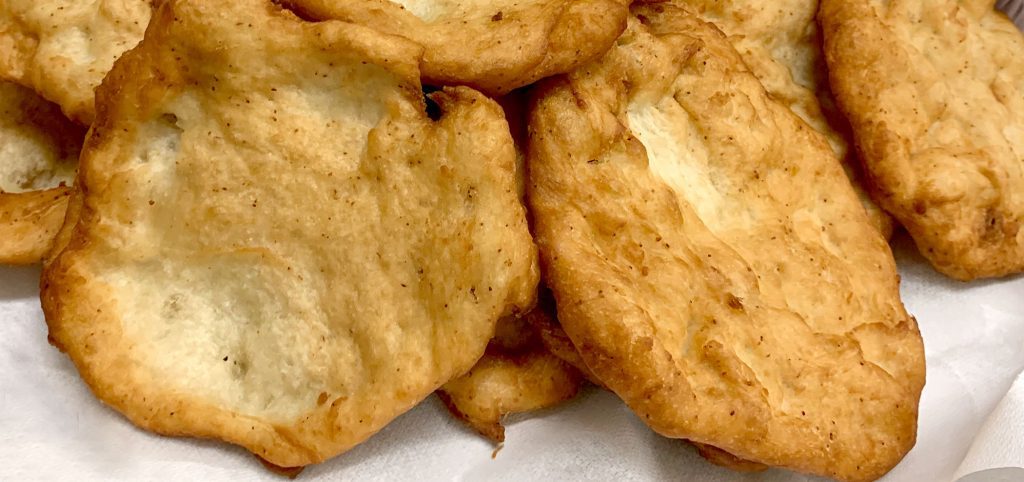
Step 1 The dough is prepared beforehand and allowed time to rise before preparing this dish. Step 2 Louise Billiot stretches the dough out to make individual pieces of fry bread Step 3 The piece of dough is set in oil at approximately 350 degrees for 3 minutes or until golden brown. Step 3 Step 5 Once the Fry Bread is finished, enjoy plain or make an “Indian Taco” with fixings of your choice. a recipe Fry Bread Louise Billiot Fry bread is a traditional Native American dish common to many tribes. *exact measurements are Billiot’s secret For the bread flour baking powder water For the Indian Taco ground meat salsa lettuce tomatoes shredded cheddar cheese 1 Prepare the dough and allow to rise 2Stretch the dough out to make individual pieces3Fry the bread in 350 degree oil for 3 minutes or until golden brown4Once the Fry Bread is finished, enjoy alone or as an “Indian Taco” with fixings of your choice
Councilman Janzen Verdin
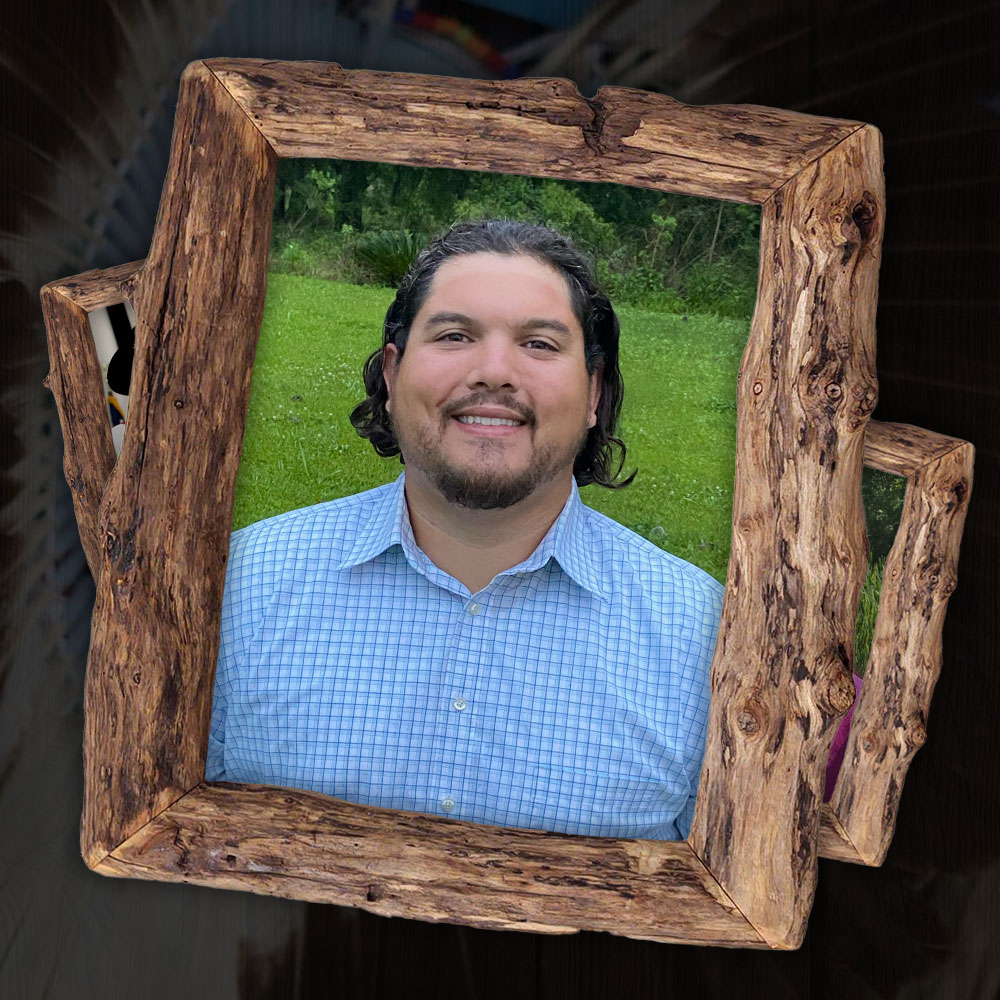
The United Houma Nation Leadership Listen Dulac, Louisiana United Houma Nation, District #3 By Loyrn Monceaux, Staff WRiter For a tribe of over 19,000, proper communication channels are essential to keeping everyone well informed and active. However, these channels need to be properly developed and maintained by someone with experience. Janzen Verdin joined the United Houma Nation tribal council in 2020, representing District 3 of the tribe which includes the lower Dulac and Dularge areas. With his experience in mass communication, Verdin plans on creating a media committee and reviving the tribal radio station. Verdin says by creating this committee, they will be able to develop strategies to connect with their tribal members and get them more involved. “That’s really my motivation… and the same thing with the radio station… I want to give people a reason to be proud to be Houma again, you know,” says Verdin. Verdin looks to restore the tribe’s radio station, KUHN 88.9 FM, located in Golden Meadow. KUHN is a non-commercial radio station that is currently off-air. The station used to air Cajun, Zydeco and Swamp Pop music with local news programs Monday through Friday. Verdin says that the United Houma Nation is in the process of getting an ordinance so they can put together a PR and media committee. Once the committee is set up, he will be able to work more on getting KUHN running again. “We’ve had that station for a while now,” says Verdin. “We haven’t really been able to really use it like it should be used… at least in my opinion with a mass [communication] background… I want to try to use it to really be like a source of information not just for the area that it’s in, but for pretty much Indian country throughout at least the state of Louisiana.” Verdin says that he is hoping to have at least two paid staff members and a few interns working for KUHN. “We currently don’t have any staff working on it right now as far as I know,” he says, “but once we get this committee set up, I plan on being a lot more involved with the radio station, and I would like to ideally set up a partnership with Nicholls’ Mass [Communication] department to do like an internship-type deal at the station for students.” Verdin is a 2014 graduate of Nicholls State University with a Bachelors in Mass Communications. After college, he joined the Inter-Tribal Council of Louisiana (ITC), where he worked as a work-force development specialist and then as a multimedia specialist until 2019. According to the Inter-Tribal Council of Louisiana’s website, ITC is a non-profit workforce development organization that helps Native Americans in Louisiana with their academic and occupational needs. Verdin traveled around the southern United States making testimonial videos about ITC’s grant program they offer to tribal citizens. He also developed a couple of websites along with managing ITC’s social media. Verdin decided to run for the United Houma Nation’s tribal council after he left ITC. “Before I started working for ITC, I didn’t realize how many Native American people were actually in Louisiana, and there’s a lot,” says Verdin. “Our tribe alone is 20,000 members and there are several other tribes in the state that aren’t federally recognized or even state recognized. There’s a lot of us here so after being able to experience that and seeing how things work in other tribes… I guess to kind of bring the strategies that I witnessed in these other tribes and apply it for us to help us get ahead.”
Crafts Showcase Artistry
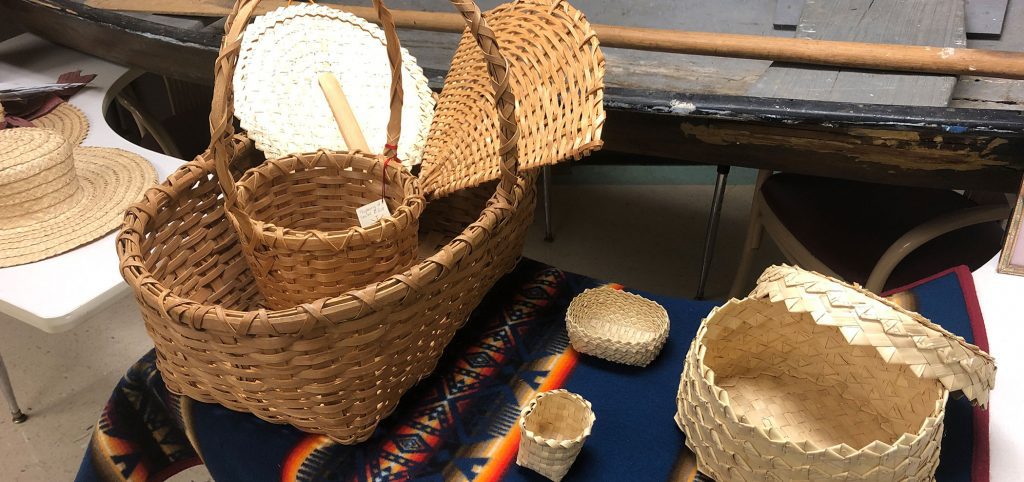
By loryn monceaux By troy dupont
Foods and Influences

By Robbie Trosclair, staff writer For the United Houma Nation, food starts with traditional crops like corn, squash and beans — a trio known as the three sisters because of the way they sustain each other and the soil while growing together. Monique Verdin, a UHN member, believes the food they grow is important to help heal the damage done to the Earth from overfarming. “We should look down at the earth beneath us in order to look forward,” Verdin said. With the crops grown, the UNH can start to celebrate their history by creating traditional foods. Ida Aronson, who runs the United Houma Nation farm, says growing traditional produce is helping them connect to their past through traditional recipes like Maque Choux (pronounced Mock-Shoe), a recipe made from corn and herbs. Other traditional dishes include dumplings made from persimmons, custards made from squash and traditional teas. “I’m hoping to bring back more nutritional foods to the surrounding Houma area,” Aronson says. Louise Billiot, who grew up with indigenous dishes like the ones above, says another traditional dish she grew up with is fry bread. “It’s simplicity is why it’s so good,” Billiot says. Billiot says that when she was a child growing up, she remembers the cooking being plain because they didn’t have much. Even her gumbo recipe just consists mostly of onions, chicken, water and filé, a thickener used in gumbo made from ground sassafras, a traditional UHN crop. In fact, the Houma introduced many ingredients that are now considered Cajun — foods like grits, sweet potatoes and beans, she says. A community farm Cooking With annie’s restaurant Recipes & Foods
